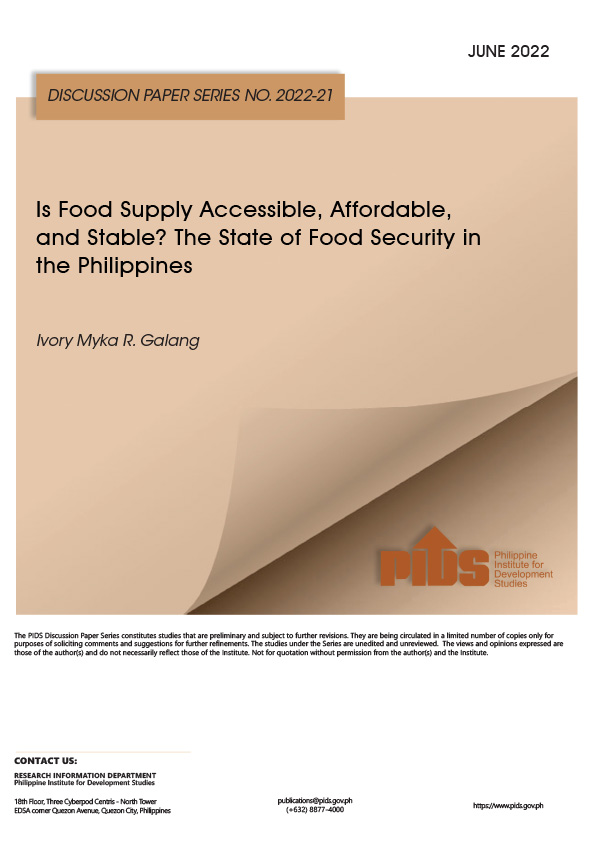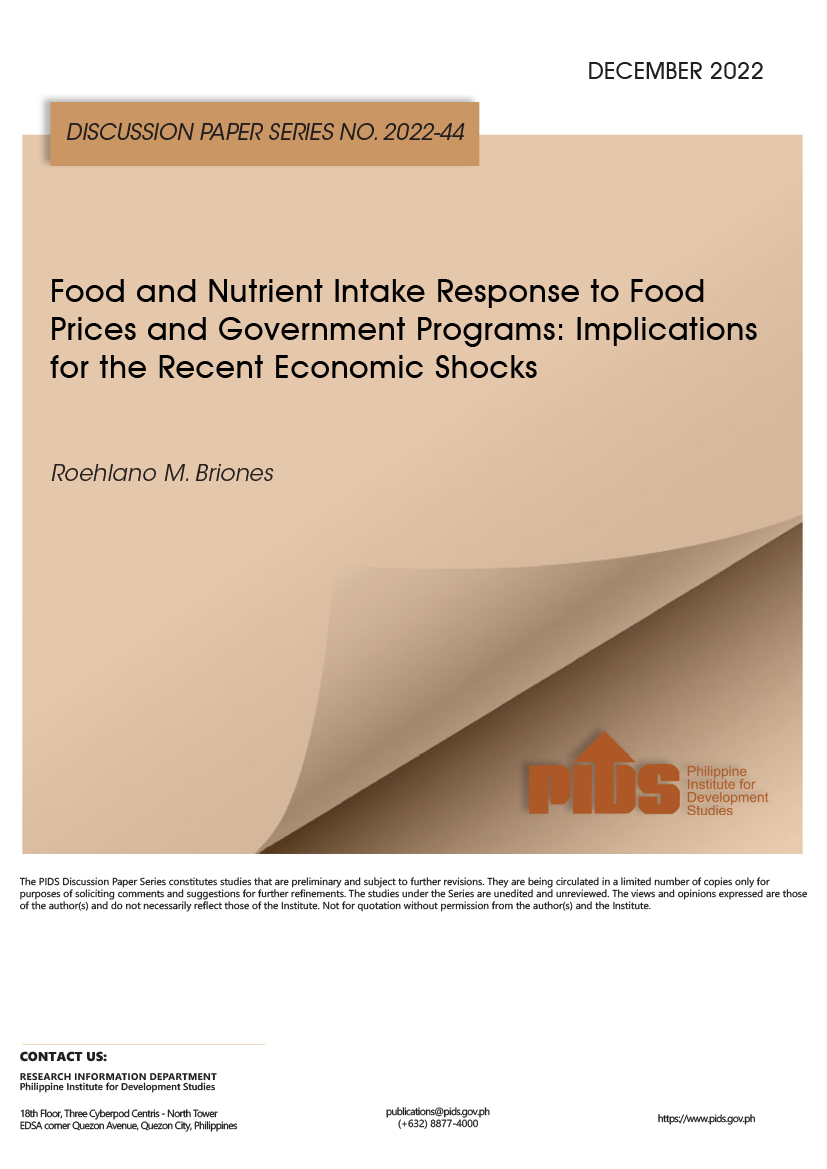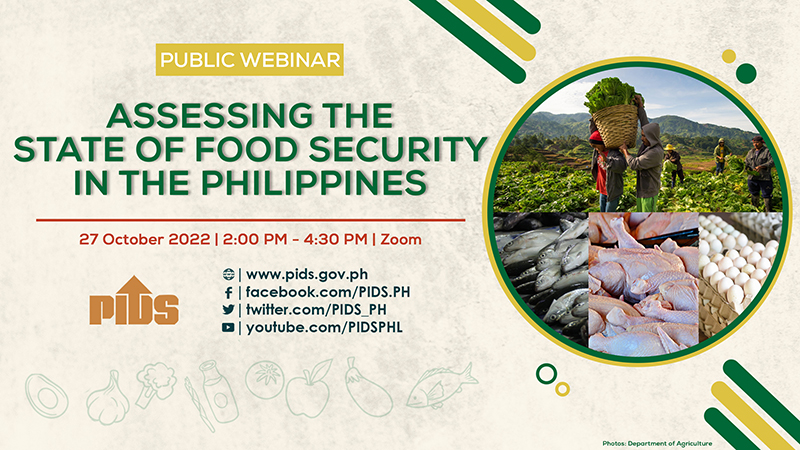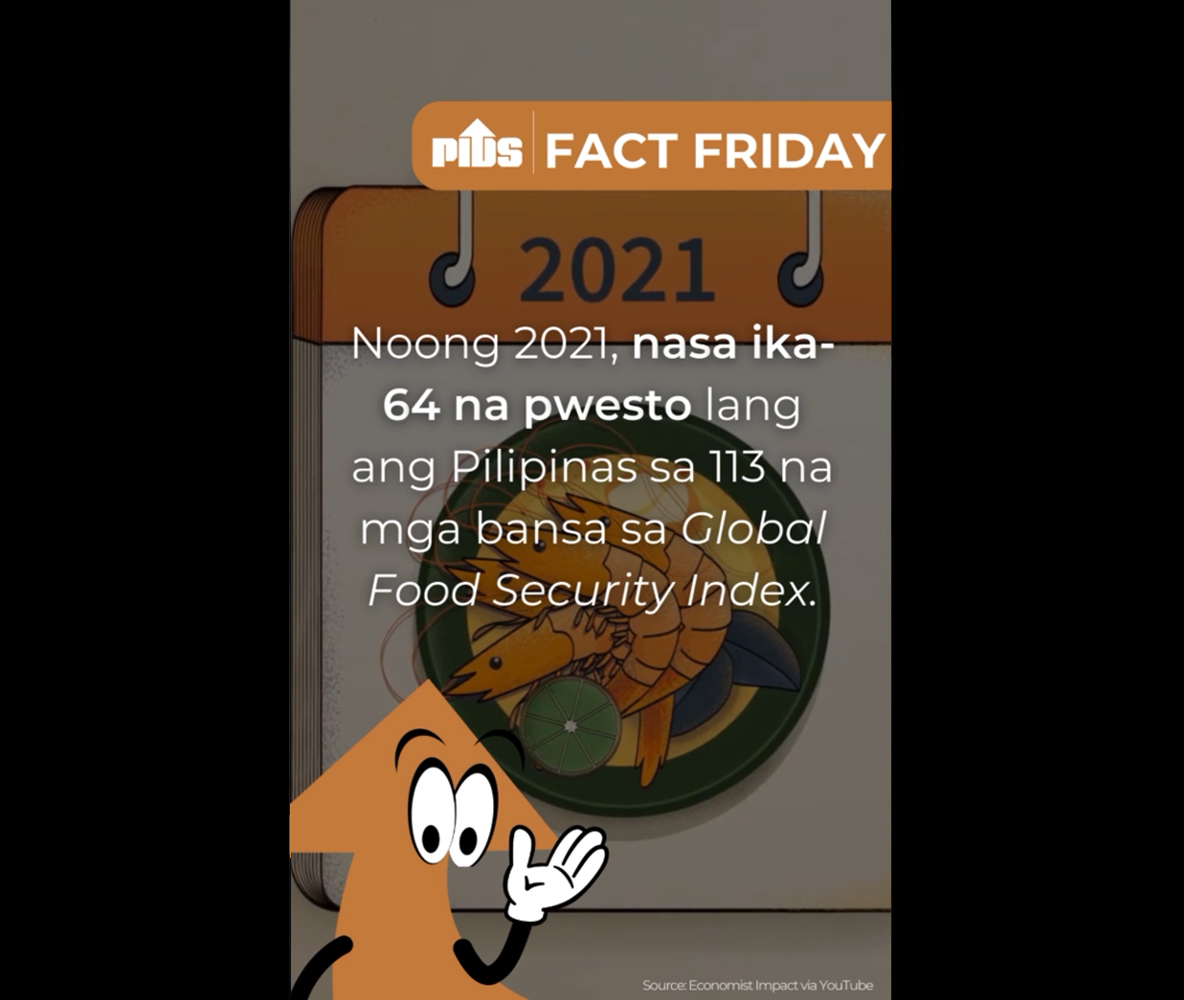Based on The Economist’s 2021 Global Food Security Index (GFSI), the Philippines ranked 64th out of 113 countries in terms of its four dimensions of food security. After the World War II ended, the world still had to contend with population explosion, hunger, and poverty. The Philippines, just like other countries in the world, was actively searching for solutions through the conduct of research and the implementation of various agricultural programs and nutrition programs aimed at increasing food production and fighting the widespread malnutrition, especially among Filipino children.
Since the term food security was officially defined and become popular in the late 1990s, it has been included in government laws, policies, and programs, such as the Agriculture and Fishery Modernization Act of 1997. This paper aims to evaluate the progress of AFMA implementation to date and assess prospects toward completing its Food Security objective.
Using various indicators for the four dimensions of food security, namely, food availability, food accessibility, food utilization, and stability, the paper found that food security goal is yet to be achieved. Even the country’s performance in achieving the Sustainable Development Goal (SDG) 2: Zero Hunger reflects that there have been some improvements, but significant and major challenges remain to be addressed.
However, it is worth noting that the Department of Agriculture and other government agencies, which are tasked to develop the agriculture sector and ensure food security and nutrition, have made significant strides toward this goal, albeit falling short.
Comments to this paper are welcome within 60 days from the date of posting. Email publications@pids.gov.ph
Citations
This publication has been cited 20 times
- DailyGuardian. 2022. Food security far for now but possible—study. DailyGuardian.
- Allanigue, Alaine. 2022. PIDS public webinar tackles state of food security in the PH. Philippine Information Agency.
- Baclig, Cristina Eloisa. 2022. World Food Day 2022: Rising costs keep millions in PH away from healthy diets. Inquirer.
- de Vera, Ben. 2022. Many Filipinos can’t afford healthy food. Inquirer.net.
- de Vera, Ben. 2022. Many Filipinos can’t afford healthy food due to lack of agri infra — think tank. Inquirer.net.
- Federigan, Ludwig. 2022. Climate change is a serious threat to human rights. Manila Times.
- Guides, Ariel B.. 2023. Food security (Opinion piece by Ariel B. Guides). Visayan Daily Star .
- Hartigan-Go, Kenneth and Angel Faye Castillo, Melissa Louise Prieto. 2024. Hungry children do not make good students (Opinion piece by Kenneth Hartigan-Go, Angel Faye Castillo, Melissa Louise Prieto). Rappler.
- Inquirer. 2022. No Filipino should go hungry. Inquirer.
- Jocson, Luisa Maria Jacinta. 2022. Job quality upgrades in agri seen boosting food affordability. BusinessWorld.
- Macapagal, Jed. 2022. Tech-based tact pushed to attain food security. Malaya Business Insight.
- Ochave, Revin Mikhael. 2022. Food security seen intertwined with transport, energy, health systems. BusinessWorld.
- Panay News . 2022. Challenges in achieving food security. Panay News .
- Philippine Institute for Development Studies. 2022. Food security far for now but possible—PIDS study. Philippine Institute for Development Studies.
- Philippine Institute for Development Studies. 2022. Multisectoral collaboration a must for food security. Philippine Institute for Development Studies.
- Piatos, Tiziana Celine. 2022. Infra, tech boost food security. Tribune.
- Piatos, Tiziana Celine. 2022. Food security needs collaboration — researchers. Tribune.
- Rain de Ocampo . 2025. Fuel Your Body – Nutrition is the Key to Health and Wellness. Rain de Ocampo.
- Schacter, Mike. 2022. No Filipino should go hungry. Vigour Times.
- Siton-Yap, Whelma. 2023. Food security. Metropost.













